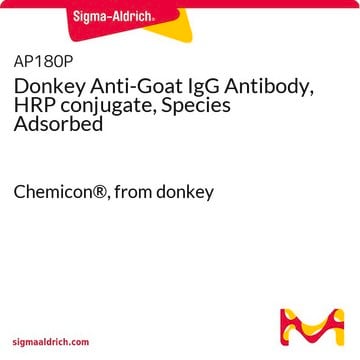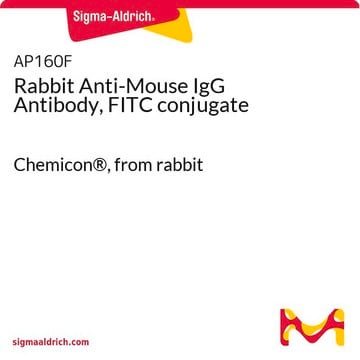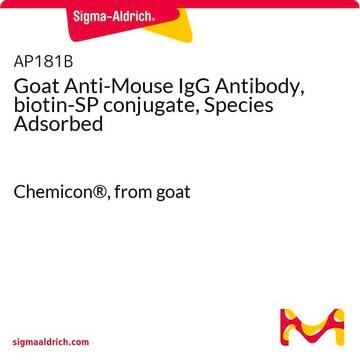AP180B
Donkey Anti-Goat IgG Antibody, biotin-SP conjugate, Species Adsorbed
1 mg/mL, Chemicon®
About This Item
Polecane produkty
pochodzenie biologiczne
donkey
Poziom jakości
białko sprzężone
biotin conjugate
forma przeciwciała
affinity purified immunoglobulin
rodzaj przeciwciała
secondary antibodies
klon
polyclonal
reaktywność gatunkowa
goat
producent / nazwa handlowa
Chemicon®
stężenie
1 mg/mL
metody
ELISA: suitable
flow cytometry: suitable
immunofluorescence: suitable
immunohistochemistry: suitable
western blot: suitable
Warunki transportu
wet ice
docelowa modyfikacja potranslacyjna
unmodified
Opis ogólny
Specyficzność
Zastosowanie
Western blots using enzyme-conjugated streptavidin: 1:20,000-1:400,000.
Immunohistochemistry: 1:500-1:5,000
Flow cytometry: 1:200-1:1,000
Fluorescence Immunohisto/cytochemistry: 1:200-1:1,1000
Optimal working dilutions must be determined by end user.
Secondary & Control Antibodies
Secondary Antibodies Adsorbed for Dual Labeling
Postać fizyczna
RECONSTITUTION:
Reconstitute with 500 μL of sterile distilled water.
Przechowywanie i stabilność
Informacje prawne
Oświadczenie o zrzeczeniu się odpowiedzialności
Nie możesz znaleźć właściwego produktu?
Wypróbuj nasz Narzędzie selektora produktów.
Zwroty wskazujące rodzaj zagrożenia
Zwroty wskazujące środki ostrożności
Klasyfikacja zagrożeń
Aquatic Chronic 3
Kod klasy składowania
11 - Combustible Solids
Klasa zagrożenia wodnego (WGK)
WGK 3
Certyfikaty analizy (CoA)
Poszukaj Certyfikaty analizy (CoA), wpisując numer partii/serii produktów. Numery serii i partii można znaleźć na etykiecie produktu po słowach „seria” lub „partia”.
Masz już ten produkt?
Dokumenty związane z niedawno zakupionymi produktami zostały zamieszczone w Bibliotece dokumentów.
Nasz zespół naukowców ma doświadczenie we wszystkich obszarach badań, w tym w naukach przyrodniczych, materiałoznawstwie, syntezie chemicznej, chromatografii, analityce i wielu innych dziedzinach.
Skontaktuj się z zespołem ds. pomocy technicznej







